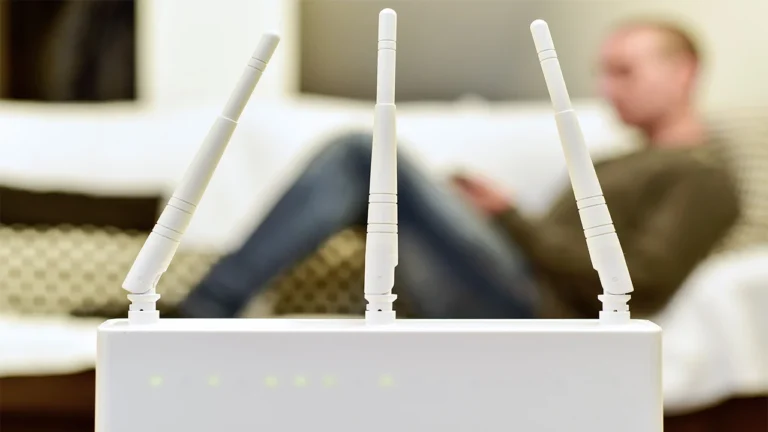In today’s increasingly connected world, the concept of a smart kitchen is no longer a futuristic fantasy but a practical reality. A smart kitchen command center serves as the hub for managing and controlling all your smart kitchen devices and appliances, streamlining your cooking experience, and enhancing convenience. In this guide, we’ll explore how to create an effective smart kitchen command center, covering everything from choosing the right location and components to setting up and optimizing the system for daily use.
Choosing the Right Location

The first step in creating a smart kitchen command center is selecting an ideal location. The placement of your command center is crucial for ensuring ease of access and maximizing functionality. Consider the following factors when choosing a location:
- Central Position: The command center should be centrally located in the kitchen, making it easy to access from various points. This central position ensures that all household members can interact with the system without difficulty.
- Visibility and Accessibility: The screen or display should be at eye level and easily visible from common kitchen areas, such as the cooking station, sink, and dining area. This setup allows you to monitor and control devices without having to leave your current task.
- Proximity to Power Sources: Ensure that the chosen location has access to power outlets. This consideration is essential for keeping your smart hub, display, and other devices powered and functional.
Essential Components of a Smart Kitchen Command Center
A smart kitchen command center is composed of various essential components that work together to provide seamless control and automation. Here are the key elements you should consider:
Smart Hub or Central Control Device
The smart hub is the brain of your command center, connecting and controlling all smart devices in the kitchen. Popular options include Amazon Echo, Google Nest Hub, and Apple HomePod. When selecting a hub, consider compatibility with your existing devices and the ecosystem you prefer. The hub should support voice commands, touch controls, and app-based management.
Smart Display or Tablet
A smart display or tablet provides a visual interface for managing your smart kitchen. This display can show recipes, control settings, and provide real-time information about your appliances. Options like the Google Nest Hub Max or Amazon Echo Show offer built-in voice assistants, making it easy to control devices with both touch and voice commands. Mount the display on the wall or place it on the countertop for easy access.
Voice Assistants
Voice assistants like Amazon Alexa, Google Assistant, and Apple Siri play a crucial role in hands-free control. These assistants can be integrated into your smart hub or smart speakers placed throughout the kitchen. They allow you to perform tasks like setting timers, adjusting lighting, and controlling appliances with simple voice commands. This functionality is especially useful when your hands are full or when you’re in the middle of cooking.
Smart Plugs and Switches
Not all kitchen appliances come with built-in smart features. Smart plugs and switches allow you to automate non-smart devices, such as coffee makers, blenders, and lamps. By plugging these devices into smart plugs, you can control them remotely, set schedules, and integrate them into automated routines. For instance, you can program your coffee maker to start brewing every morning at a specific time.
Smart Appliances Integration
For a fully connected kitchen, integrate your smart appliances with the command center. This integration includes smart ovens, refrigerators, dishwashers, and more. By connecting these appliances to your smart hub, you can monitor their status, receive alerts, and control them remotely. For example, you can preheat your oven on your way home, check the contents of your refrigerator via an app, or receive notifications when your dishwasher cycle is complete.
Organizing the Command Center
Creating a smart kitchen command center isn’t just about the technology; it’s also about organization and aesthetics. A well-organized command center is not only functional but also visually pleasing.
Cable Management and Power Solutions
With multiple devices connected to the command center, managing cables can be challenging. Use cable organizers, clips, and covers to keep cords tidy and prevent clutter. Consider using a power strip with surge protection to manage multiple plugs and ensure that your devices are safe from electrical surges.
Design and Aesthetics
The design of your command center should complement your kitchen’s decor. Choose devices and mounts that match the style and color scheme of your kitchen. For a sleek and minimalist look, opt for devices with clean lines and neutral colors. Wall-mounted displays and smart speakers can be positioned discreetly to blend seamlessly into the kitchen environment.
Setting Up and Configuring Devices
Once you’ve selected and organized your components, it’s time to set up and configure your devices. This process involves connecting your smart appliances and devices to the smart hub and customizing the system to suit your needs.
Initial Setup and Connectivity
Start by setting up your smart hub and connecting it to your home’s Wi-Fi network. Follow the manufacturer’s instructions for pairing your smart appliances and devices with the hub. Ensure that all devices are connected and that the system recognizes them. Check for compatibility between devices, as some products may require specific hubs or ecosystems to function properly.
Creating Scenes and Automations
One of the most powerful features of a smart kitchen command center is the ability to create scenes and automations. Scenes are predefined settings that control multiple devices simultaneously. For example, a “Cooking Mode” scene might turn on specific lights, set the oven to a certain temperature, and start playing your favorite cooking playlist. Automations are actions triggered by specific events, such as time, motion, or voice commands. You could set an automation to turn off all kitchen lights when you say, “Goodnight.”
Voice Command Customization
Customize voice commands for ease of use. You can set up shortcuts for common tasks, such as “Start my morning routine” to turn on lights, start the coffee maker, and read the weather. Personalized commands make it easier to control your smart kitchen without needing to remember specific phrases.
Security and Privacy Considerations
As with any smart technology, security and privacy are critical. Protecting your smart kitchen command center from unauthorized access and ensuring data privacy is essential.
Securing Smart Devices and Networks
Secure your smart kitchen by setting strong, unique passwords for all devices and accounts. Use a secure Wi-Fi network with WPA3 encryption and enable two-factor authentication where available. Regularly update the firmware and software of your devices to protect against vulnerabilities.
Managing Permissions and Data Privacy
Be mindful of the permissions you grant to apps and devices. Review and manage permissions to ensure that your data is not being shared unnecessarily. Understand the data collection practices of the devices and apps you use, and adjust settings to limit data sharing if desired.
Optimizing the Command Center for Daily Use
To make the most of your smart kitchen command center, it’s essential to maintain and optimize the system for daily use.
Regular Maintenance and Updates
Keep your devices and software up-to-date to ensure smooth operation and access to the latest features. Regularly check for firmware updates and apply them as needed. If you encounter issues, consult the manufacturer’s support resources for troubleshooting tips.
Enhancing Functionality Over Time
As new smart kitchen devices and technologies become available, consider expanding your system. Add new devices that enhance convenience, such as smart scales for precise measurements or smart cameras for monitoring cooking progress. Stay informed about emerging trends and innovations in smart kitchen technology to continually improve your setup.
Tips and Best Practices
Here are some additional tips and best practices to maximize the efficiency and convenience of your smart kitchen command center:
- Maximizing Efficiency and Convenience: Use automations and scenes to streamline daily routines. For example, set up a morning routine that turns on the lights, brews coffee, and plays the news.
- Balancing Automation with Manual Control: While automation can enhance convenience, it’s also important to maintain manual control for flexibility. Ensure that you can easily override automated settings when needed.
- Adapting the Command Center to Your Lifestyle: Customize your smart kitchen command center to suit your household’s unique needs and preferences. Consider the daily habits and routines of all household members when setting up scenes and automations.
Conclusion
A smart kitchen command center is a powerful tool for enhancing the functionality and convenience of your kitchen. By centralizing control of your smart devices and appliances, you can streamline daily tasks, improve efficiency, and create a more enjoyable cooking experience. From choosing the right location and components to setting up and optimizing the system, there are many factors to consider when creating your command center. By following the steps outlined in this guide, you can create a smart kitchen that meets your needs and helps you embrace the benefits of modern technology.




